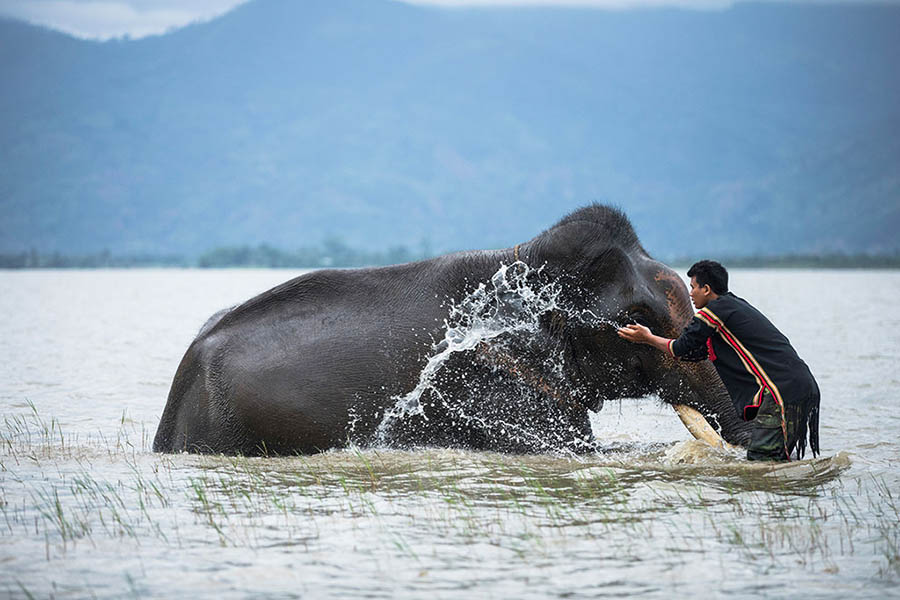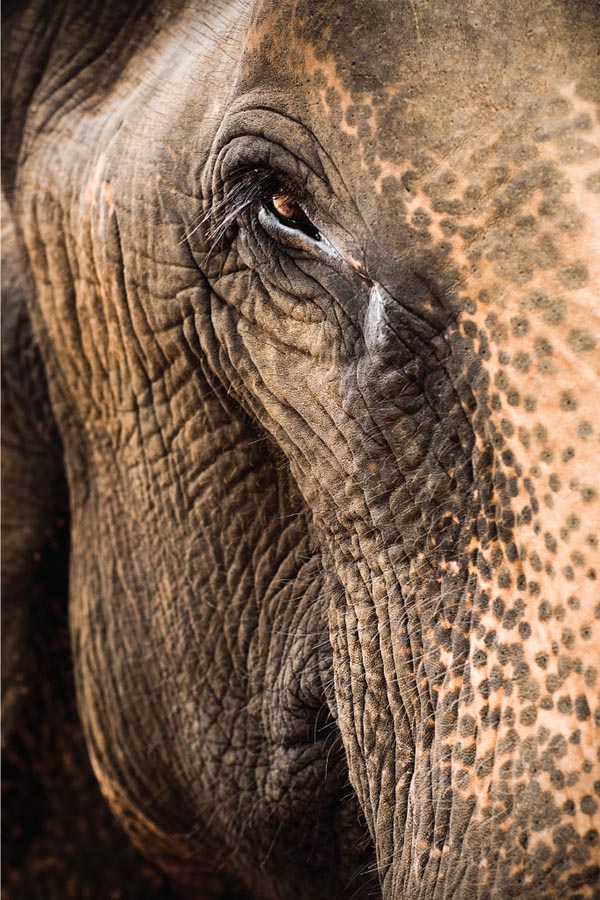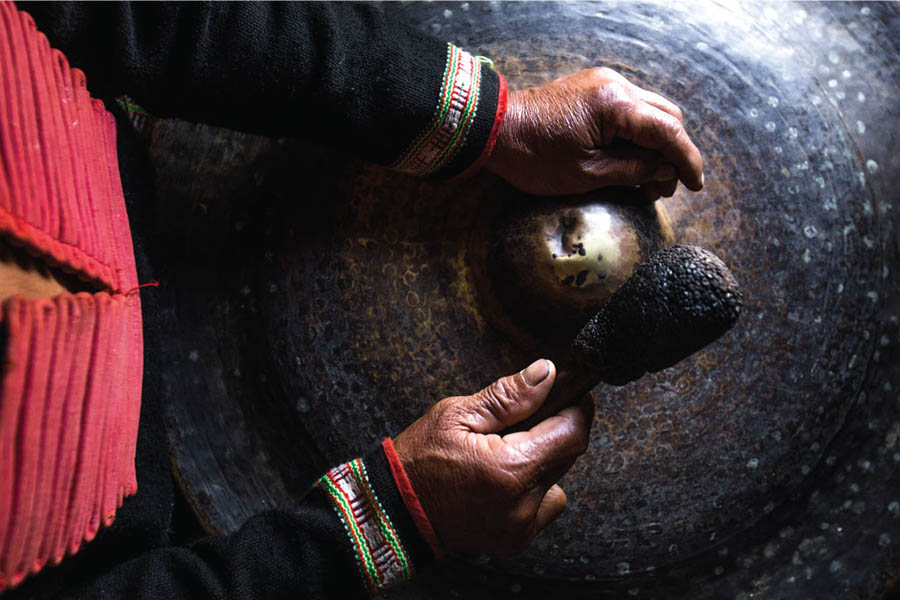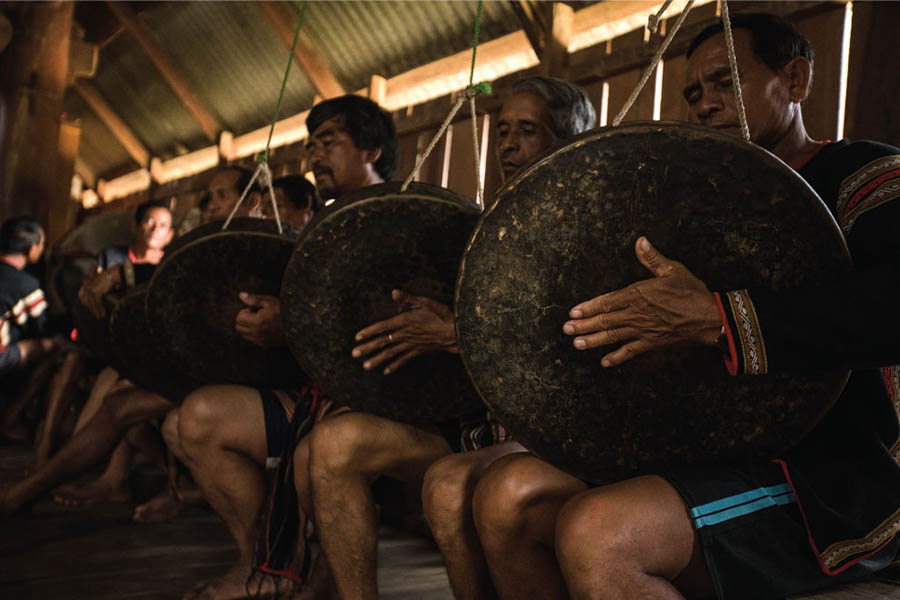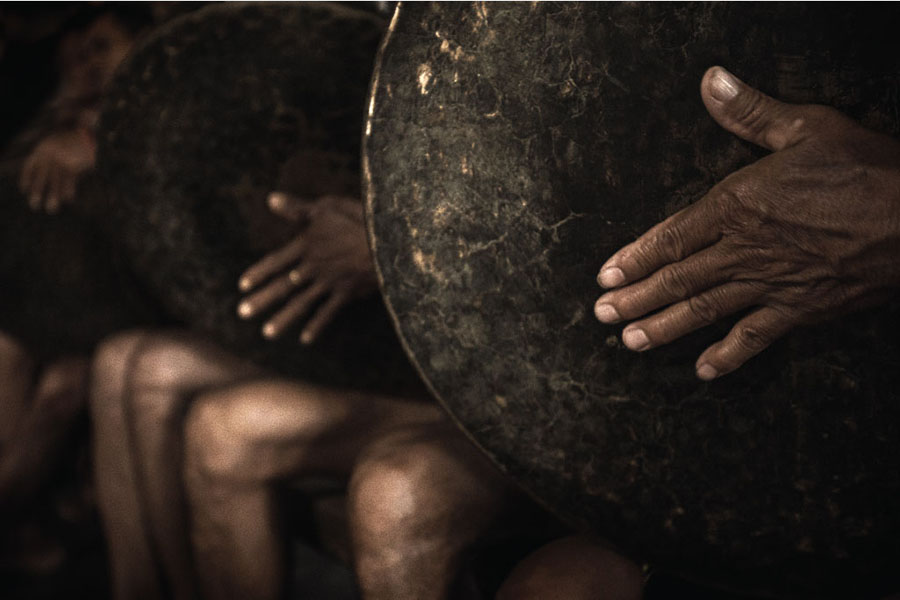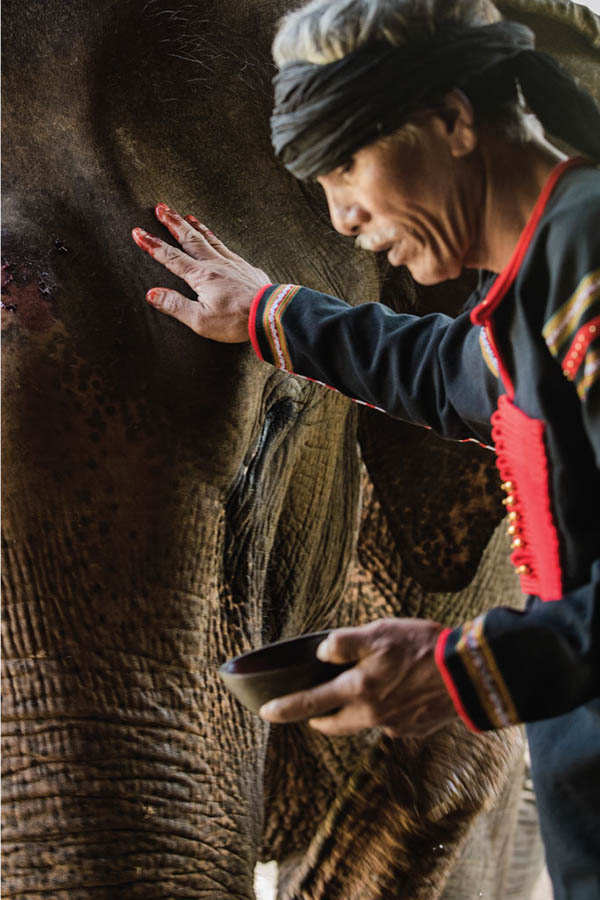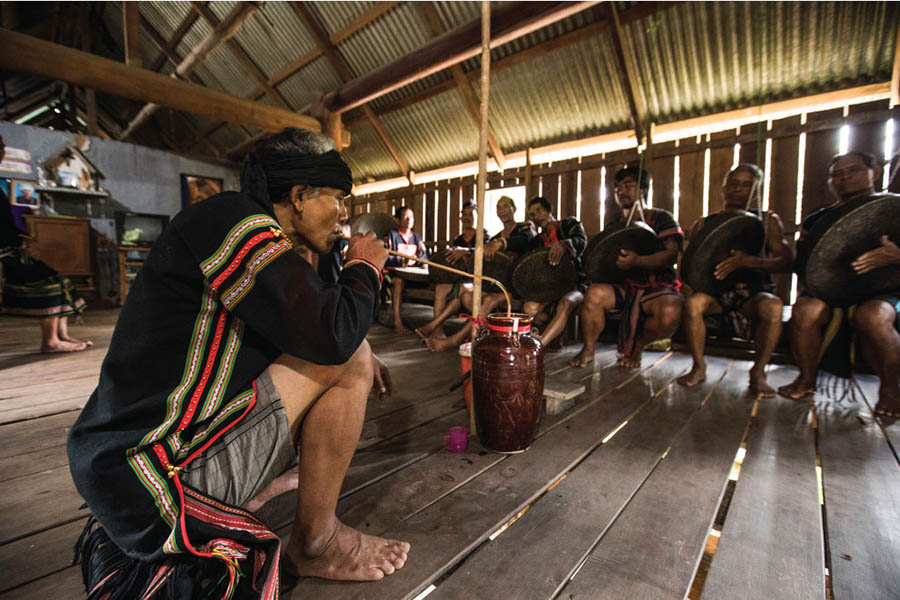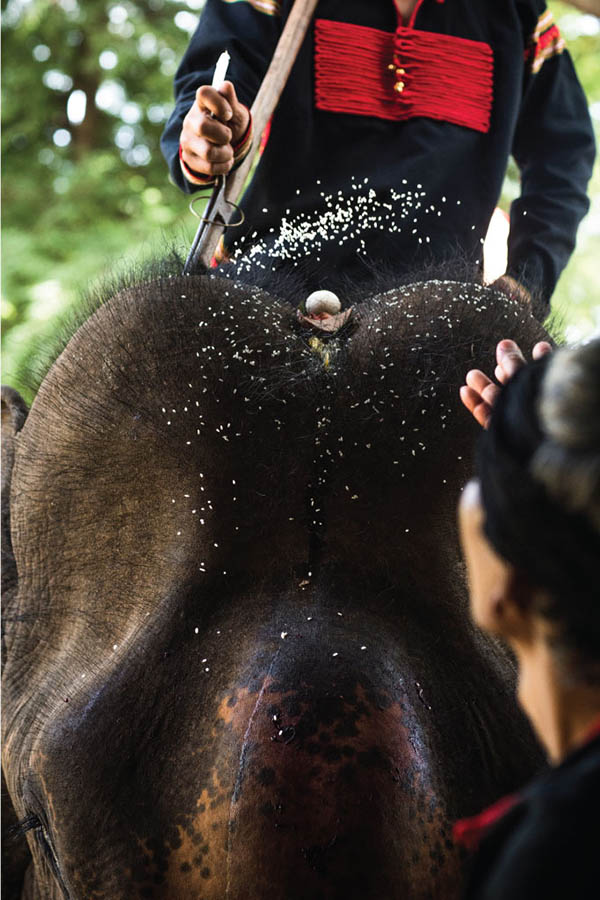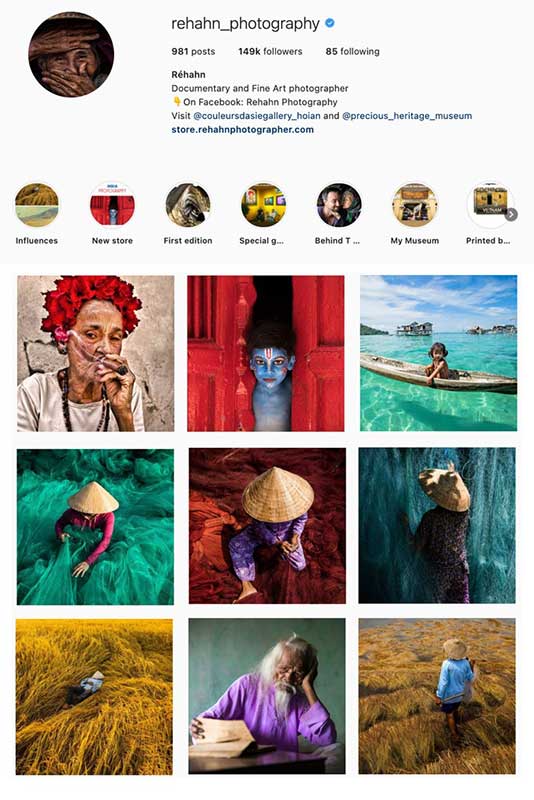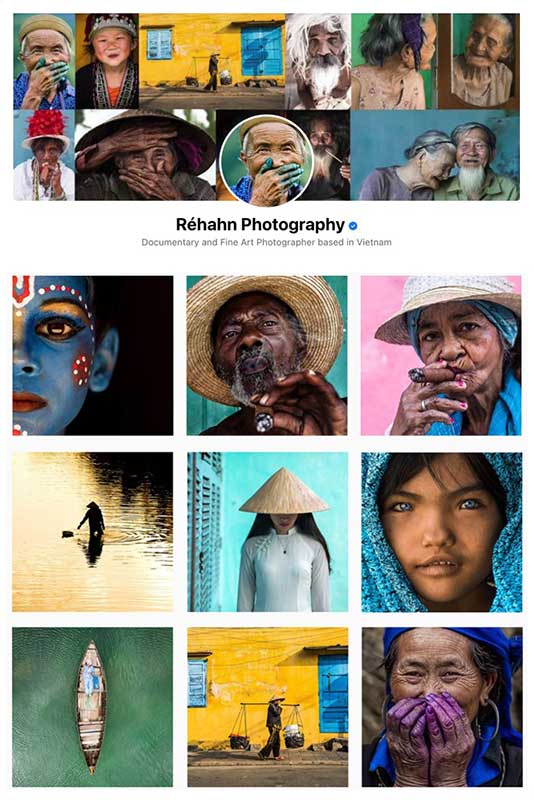The Mnong ethnic group in Vietnam’s Dak Lak province has lived with elephants for more than a thousand years. The Mnong consider them to be valuable members of the village community. They care for them like family. Each year the Mnong people perform a ceremony to pray for the continued good health of the elephants.
Réhahn took the following photographs in 2017 when he traveled to witness an authentic elephant celebration.
Tusks lowered, the elephant waits as the man in front of him scoops handfuls of water onto his back. The mood is respectful, anticipatory, while the elephant is washed and prepared for his ceremony. Wild grasses sway in the river with the elephant’s gentle movements.
Man and beast face one another. They are living representations of an unusual bond that has lasted for more than a thousand years in Vietnam.
During the first month of the Lunar new year, the Mnong perform a ritual to pray for the elephant’s health. Mnong tribes also exist in South Vietnam’s Bình Phước province and Cambodia but they have no known relationship with elephants.
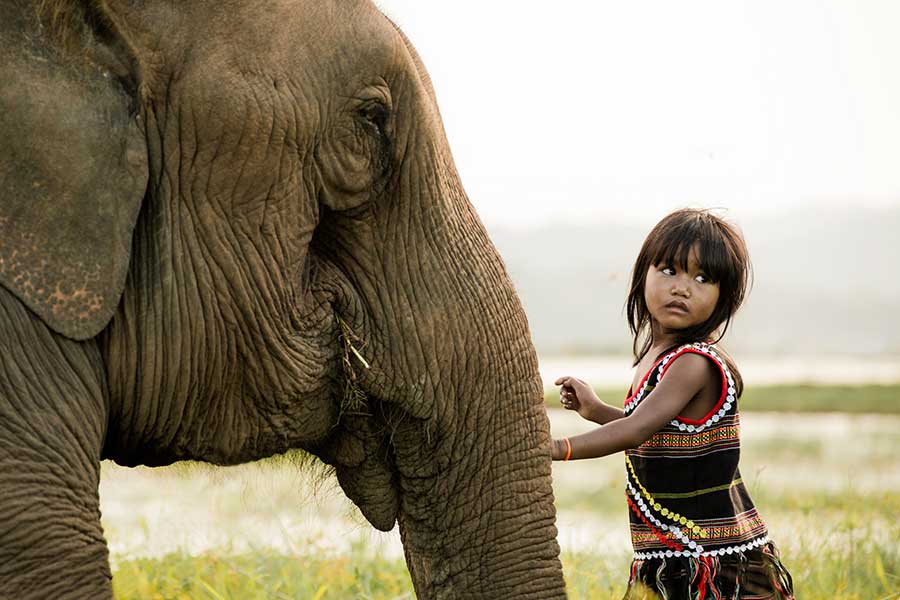
An Unusual Family Bond
Unlike sacred cows in India or cats in ancient Egypt, the Mnong in Dak Lak do not worship elephants as gods. Instead, elephants enter the Mnong community as kin. Within the family, the parents call the elephant “son” or “daughter”, and the children see the animal as a sibling.
Y Kham Sel and Y Vinh have lived as family for more than two decades. Y Kham Sel is now 25 years old, middle-aged for a healthy Asian elephant.
Asian elephants can live as long as 48 years when held in captivity. In the wild, they might live until 60 years, according to data collected by National Geographic.
“I’m very happy that I have my own elephant but I feel sad at the same time,” Y Vinh said.
“I’m worried my children will not see elephants in the future. [If this happens] I don’t know what they can be proud of … because to our ethnic group, to Highland people, the elephant is the symbol of our culture.”
“But, now, we lose the forest day by day and we lose the elephants at the same time. If one day the elephants are all gone, we will also lose the culture of the M’Nông tribe,” Y Vinh continues.
Y Vinh is not alone in his fear that elephants will soon be no more than a memory in Vietnam. The Asian elephant has been put on the endangered species list. Despite the efforts of activist groups such as the Wildlife Conservation Society to protect them.
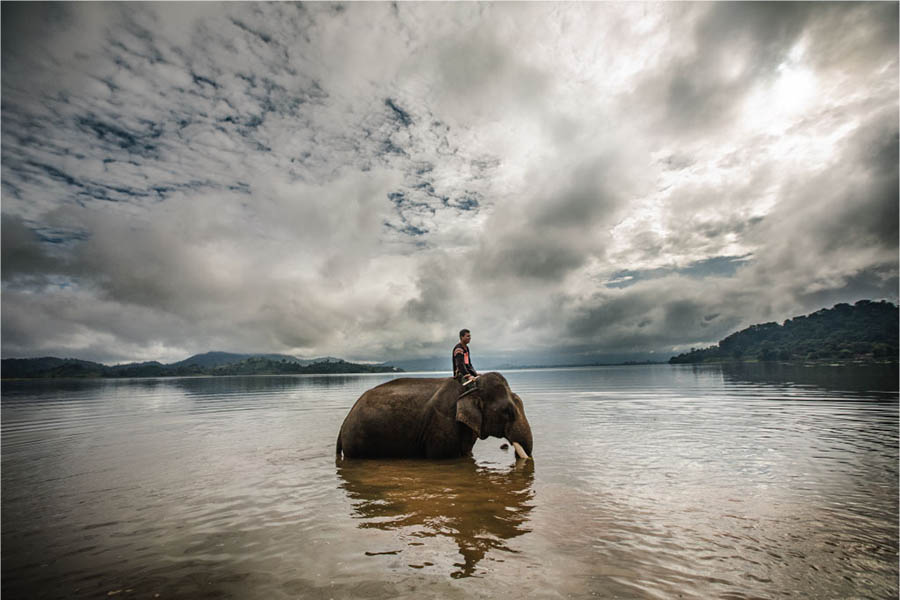
End of an Era for Elephants in Vietnam
Logging and rapid development have taken over the elephant habitats in Vietnam. As the forest land dwindles the elephants are forced out of their natural lands. Hunting elephants for ivory, though now illegal, has also reduced the elephant population drastically.
It is difficult to quantify the exact number of wild Asian elephants still living in Vietnam. However, Wild Welfare, an organization geared towards assisting animals in distress, and EleAid, a trust for elephant preservation, put the number at only 60 to 100 elephants left in the wild.
Today, the largest known herd in Vietnam is found in Dak Lak province. It is made up of approximately 15-20 individual elephants.
In response to this crisis, the Mnong have created an elephant protection law. The law states that if an elephant is in bad health the villagers must take time to care for it. Those who abuse, eat, or kill elephants will be heavily punished. The Mnong consider an elephant to have the same value as a human being. Therefore, intentionally killing an elephant is judged as murder. Unfortunately, this law does not protect all elephants in Vietnam. It is only enacted by the Mnong, who number barely more than 100,000 people.
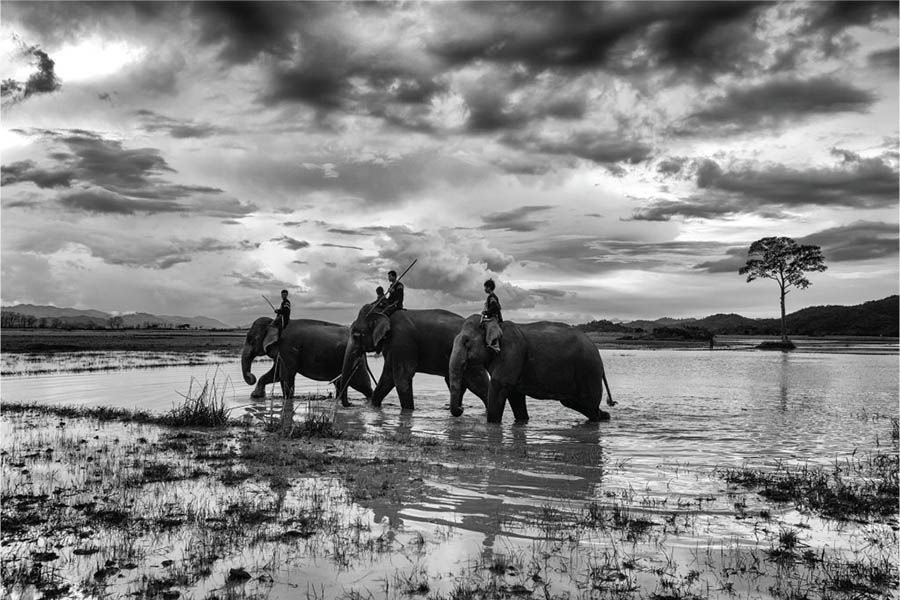
In Celebration of Elephants
There is a celebratory mood at Y Vinh’s home as Mnong villagers arrive for the blessing of Y Kham Sel. They arrive in their dark tunics highlighted with scarlet brocade, bearing gifts of wine or pork for the family.
The festival represents the respect the villagers have for God, for their ancestors, and for the spirit of the elephant.
From the sheltered porch of the traditional stilt home, men begin to beat the sides of their hammered brass drums. A villager places a candle on a barrel of wine to symbolize the God of Fire in the ceremony. The rhythm picks up. It is time to begin.
Y Kham Sel is led out of the water and a traditional M’Nông costume with two bracelets is placed atop his head. Y Vinh’s father, the village Shaman, approaches the animal and lays his hand on his hide. “We will never let you lack for anything,” he whispers to Y Kham Sel.
In the morning light, the thick skin of the elephant gleams charcoal grey. Much has been written about the eyes of an elephant: how much wisdom is apparent within; the visible human-like emotions. Y Kham Sel has amber eyes framed with thick lashes. He gently swats insects away with his whip-like tail, looking down at the humans who surround him.
To stand this close to a wild animal with no fear and no hesitation is the domain of the M’Nong.
The elephant seems to accept the people around him. He remains still, calm, unperturbed by the scents and sounds.
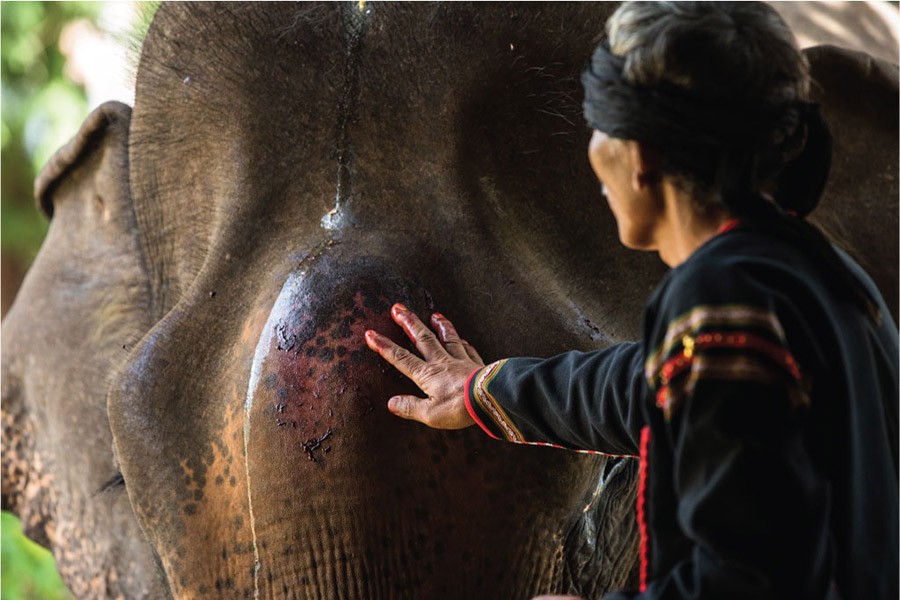
The Formal Blessing
The metallic beat of the gong ceases and the formal blessing commences. The elephant will be anointed with several items that have important qualities in M’Nông culture. First, a raw egg is broken on Y Kham Sel’s head. It represents the glory of God’s protection as well as a wish for good health and longevity.
The Shaman then places a piece of cooked pork, the best cut of meat available, on Y Kham Sel. He prays that the elephant will always have enough to eat. Elephants are herbivores; however, the pork is purely a symbolic hope that the elephant will enjoy a plentiful life.
The gong begins to hum again, as the Shaman smears the blood of a freshly slaughtered pig on the elephant’s forehead to represent unlimited strength. In the past, elephants were symbols of war in Vietnam.
The Chief of each village can recount or sing epic poems about how the supernatural strength of elephants overcame their enemies.
Now the Mnong people live in peace. But this fortitude is still used to help transfer wood beams to build their traditional stilt homes. Otherwise, the Mnong leave the elephants free to roam and graze.
Pure water from the family well is poured onto Y Kham Sel to relax him and wash away his fatigue. The water runs down his sides, wetting the soil, and the rich scent of earth fills the air.
Before the celebration, the elephant’s family prepared Can wine (Rượu cần) in an heirloom, earthenware jug. Can wine is made from fermented rice and a variety of herbs. It is left to ferment for six months before it is ready to enjoy. Sharing Rượu cần with guests is considered an honor in many of Vietnam’s highland communities. The family shares a few sips of wine with the elephant to represent the esteem the family has for him.
Next, rice is scattered across the Y Kham Sel’s back to symbolize the hope that the elephant has a plentiful life. The grain is important in Mnong culture, considered a “gem from heaven”. It provides the basis of their diet and livelihood.
Trays of food laden with banana, pineapple, and sugarcane are presented. The family and the elephant feast together to seal the bond of their common life and continued good health.
When the ceremony ends, the spirit changes from one of devout respect to that of celebration.
Wine and food are shared amongst friends and family. The feast is filled with pungent foods such as nước mắm, fermented fish, and buffalo meat. These dishes are staples of the Mnong diet because they can be preserved for long periods without spoiling.
As day turns to evening, the silhouettes of the elephants stand out against the darkening sky. The Dignified beasts cast their shadow over their human brothers and sisters.
Like any of these photographs? Visit our Online Store and make it yours
More Reading About Asian Elephants in Vietnam
Trinh Viet Cuong. 2000. Hien trang voi rung (Elephas maximus) o huyen Cu Jut (tinh Dak Lak), huyen Kon Plong (tinh Kon Tum). Report: [Status of elephants (Elephas maximus) in Cu Jut district (Dak Lak pro.), Kon Plong (Kon Tum pro.), Vietnam. Hanoi: FFI [In Vietnamese].
https://www.nationalgeographic.com/animals/mammals/a/asian-elephant/

